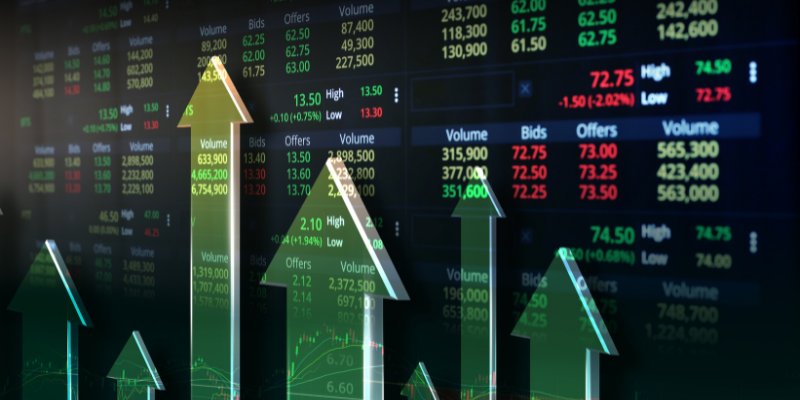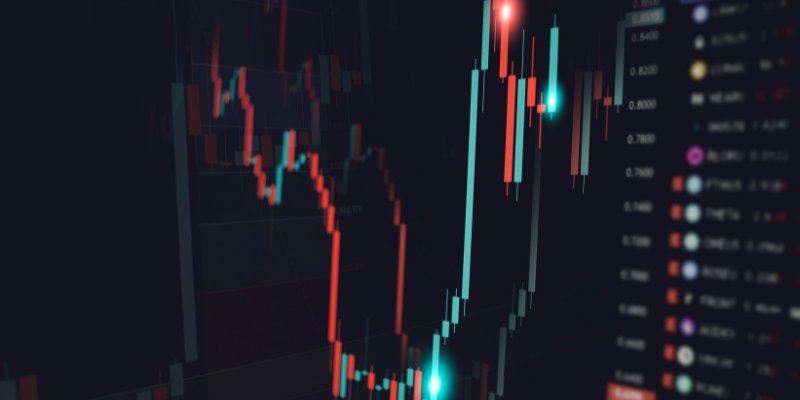Exploring Manual Trading Techniques
Nov 15, 2023 By Rick Novak
Trading techniques are the foundation of financial markets, giving people several ways to acquire and sell assets. These approaches affect how investors manage risk, volatility, and profits. Manual trading, which emphasizes human decision-making above computers, is prominent among these methods. Traders use a variety of tactics to navigate financial products and markets. Understanding manual trading basics helps traders connect to the art and science of financial markets and create a more personalized and active trading experience.
Manual trading involves people in decision-making, analysis, and execution in this complex financial transaction dance. Unlike automated methods, manual traders use intuition, skill, and flexibility to react to real-time market situations. Manual traders may negotiate market mood, economic changes, and geopolitical events with delicacy and insight from the human touch. Trading becomes a dynamic and exciting adventure where each choice reflects the trader's knowledge, strategy, and ongoing connection with the market using this hands-on approach.

Manual Trading Defined:
Manual trading relies on human decision-making to guide trade without automated technology. This differs from algorithmic or high-frequency trading, where complicated algorithms execute trades instantly. Manual traders use their expertise, experience, and intuition to negotiate the ever-changing financial markets. This approach emphasizes human interaction and lets traders participate in every step of the trading process.
Traders actively analyze, place, and execute orders in this hands-on method. Unlike automated methods, manual traders make decisions based on dynamic and adaptable factors. Manual trading involves various skills and strategies, from day trading to long-term position trading. It's a personalized journey where traders must analyze market signals, estimate risk, and seize opportunities.
Understanding manual trading implies acknowledging the trader as the primary decision-maker. Traders assess market data, use technical and fundamental analysis, and react to real-time information. The manual trader interprets minor indications and adapts strategy to changing market circumstances. This degree of participation requires a profound grasp of market dynamics and connects traders to the market, creating a dynamic and responsive trading experience.
Tools for Manual Trading:
Manual traders' judgments and success depend on their instruments. Trading platforms, technical analysis charts, and market trend indicators are essential. Market research, news, and economic indicators are vital. Manual traders may make educated judgments, locate opportunities, and manage risks using these tools.
Understanding the entire arsenal of a manual trader requires emphasizing market research, news, and economic indicators. Manual traders must analyze previous market movements, follow geopolitical developments, and watch economic releases. With these tools, traders can make better decisions and traverse financial markets more confidently.
Advantages of Manual Trading:
In the volatile financial markets, manual traders stand out for their agility. Manual traders can quickly adjust to market changes, unlike automated methods. Manual traders may capitalize on new possibilities and overcome unexpected hurdles by making real-time choices based on current information.
Manual traders need flexibility and emotional intelligence. Understanding and controlling fear, greed, and discipline are crucial. Emotional intelligence helps traders stay focused, avoid impulsive judgments, and stick to their trading plans during tumultuous times. Due to its human touch, manual trading helps comprehend market sentiment and asset values.

Challenges in Manual Trading:
Manual trading has flexibility and emotional intelligence, but it also has drawbacks. In-depth investigation and decision-making take time. Manual traders spend many hours studying financial products, watching markets, and trading. It takes a lot of work and attention to keep up with market changes. Beyond trading hours, knowledge and awareness of global economic issues that might affect financial markets are required.
Manual trading has an additional challenge: emotional emotions. Stress, anxiety, and overconfidence may impair decision-making and lead to poor results. Manual trading's human aspect adds flexibility, intuition, and emotions that might influence judgment. Manual traders must recognize and manage these emotional barriers to succeed. Disciplined trading practices, including risk management, reduce emotional judgments. Continuous learning, self-awareness, and discipline are crucial for managing manual trading's emotional roller coaster.
Successful manual traders build resilience and strategy to overcome these hurdles. They know that comprehensive analysis, being informed, and controlling emotions are not obstacles but essential to the process. Consistent success depends on overcoming these hurdles. Manual traders use their passion and emotional intelligence to overcome hurdles and improve their profession as they traverse financial markets.
Manual vs. Automated Trading:
Comparing human and automated trading methods reveals their differences. Manual trading uses judgment and intelligence to adjust to particular market scenarios. However, automated trading uses pre-programmed algorithms to conduct deals, which is fast but impersonal. For traders looking for the best strategy, knowing when human trading may outperform automation, such as in complicated and fast-moving markets, may be helpful.
Discussing how automated trading executes high-frequency transactions precisely and quickly shows their complementarity. Traders' goals, risk tolerance, and degree of commitment typically determine whether to trade manually or automatically.
Strategies in Manual Trading:
Many manual trading techniques exist for various periods and market circumstances. Day traders capitalize on intraday market changes by making short-term deals. Swing trading captures trend-related price movements by holding positions for days or weeks. Position traders maintain positions for a longer time, frequently using fundamental research.
Manual trading techniques must emphasize risk management and a well-defined trading strategy. Risk management comprises establishing stop-loss levels, diversifying the portfolio, and sizing holdings to reduce losses. A well-defined trading strategy helps manual traders make consistent judgments, remain disciplined, and adjust to market changes.
Conclusion:
Manual trading is a dynamic and exciting universe where traders negotiate financial markets with skill, adaptation, and a personal touch. This conventional method, driven by human decision-making, shows how intuition and logic work together to achieve financial objectives. We've covered everything from manual trading's definition to the tools traders need to make educated judgments. Manual traders excel in flexibility, adaptability, and emotional intelligence. These qualities come with limitations, such as the time investment and the need to manage decision-making's emotional intricacies.
Manual trading tactics demonstrate their versatility, including day, swing, and position trading. A well-defined trading strategy and risk management enable manual traders to traverse financial markets' rough seas. Manual trading survives in the ever-changing financial markets. The path helps traders earn riches and comprehend the complex relationship between risk and profit. The end of this research empowers traders by showing them that manual trading is about mastering the trip, not just the transactions.

Kelly Walker Nov 16, 2023

Rick Novak Nov 14, 2023

Rick Novak Nov 14, 2023

Rick Novak Nov 14, 2023

Rick Novak Nov 15, 2023

Kelly Walker Nov 15, 2023
